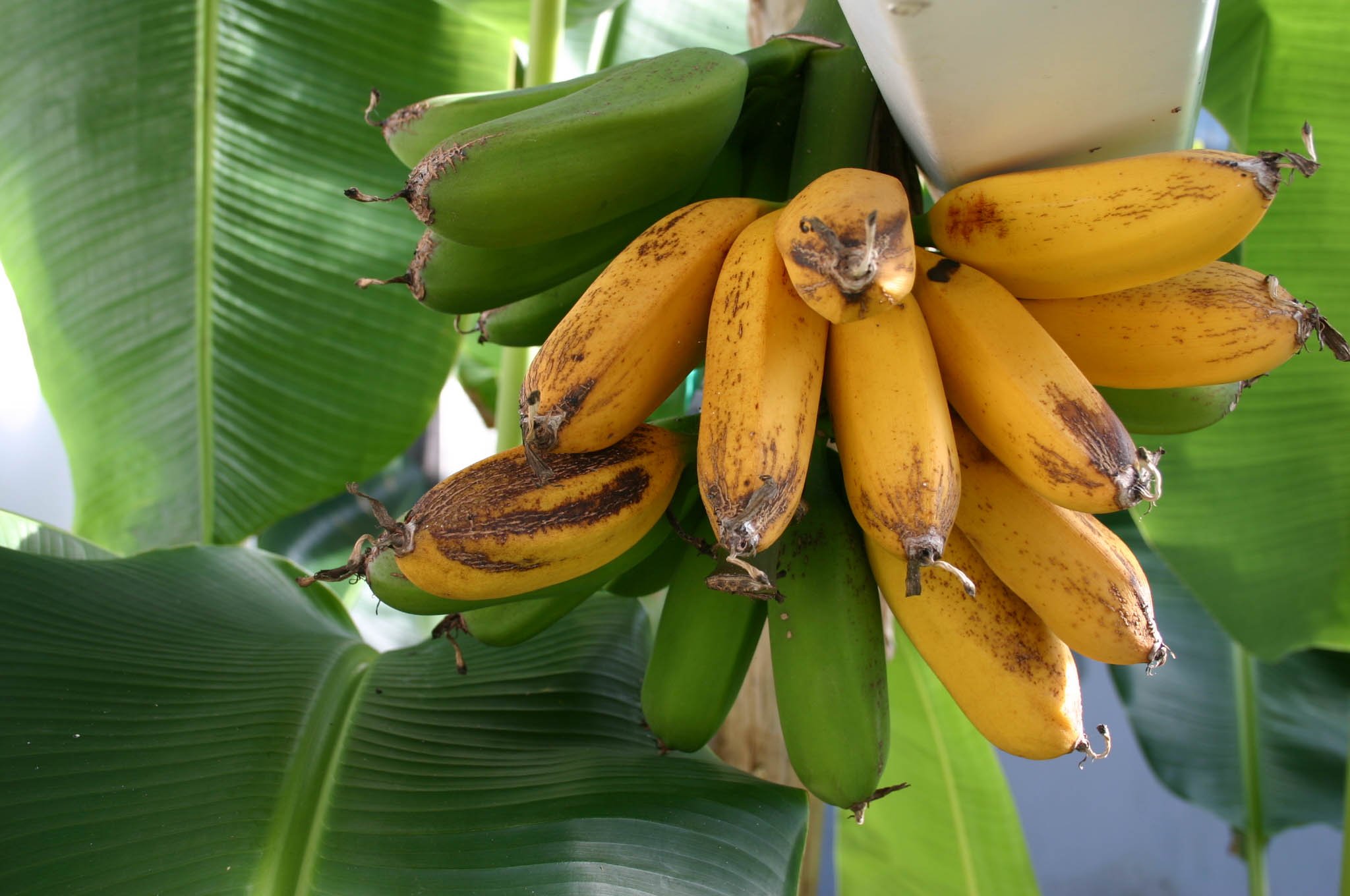
Bananas are native to Southeast Asia, so growing them in northern climates is a challenge. When I first tried growing bananas in my Rhode Island greenhouse, I kept the greenhouse warm all winter, knowing that bananas prefer temperatures over 77o F (26oC) year round. After three or four seasons and a lot of money spent on heating, I harvested some not-very-good-tasting bananas. I figure that it cost about $200 to grow a hand of bananas that I could have bought in the supermarket for about $2!
Subsequently, I learned much more about bananas. First, there are many varieties, and those you buy in grocery stores are often very different from those most suitable to grow at home. In addition, the banana fruit is not the only desirable harvest. The leaves are edible too. When a banana leaf is wrapped around chicken or pork with Mexican spices, the taste is sublime.
How to plant, water, and feed bananas is straightforward. They like fairly dry conditions and cannot tolerate being flooded. The soil should have a high organic content and a pH of 6 to 7, although bananas will grow in most commercial potting soils. To improve drainage, I add about 30% sand to my potting medium as well as about 30% compost to improve organic content. These plants should be fed two or three times a summer with a fertilizer rich in potash.
Light conditions also matter when growing bananas. These plants prefer bright sunshine. Mine grow out through the windows of the greenhouse roof and are in full sun most of the day. Even partial shade seems to slow down their growth and can delay fruiting.
To grow bananas in a greenhouse you

must be patient. Here in Rhode Island, it takes about three to four years to grow a plant large enough to set fruit, although in tropical areas, fifteen to eighteen months is all that’s required. On my plants, four or five hands of fruit develop in tiers on each banana stem during August and early September. Then, when temperatures drop, the plants stop setting fruit. At this point, I cut down each plant entirely and remove it from the greenhouse.
Propagation of banana plants is fairly easy. Suckers from which new plants grow reliably appear beside the parent plant. Using a spade, I simply slice these suckers off the parent plants and repot them in separate containers.


